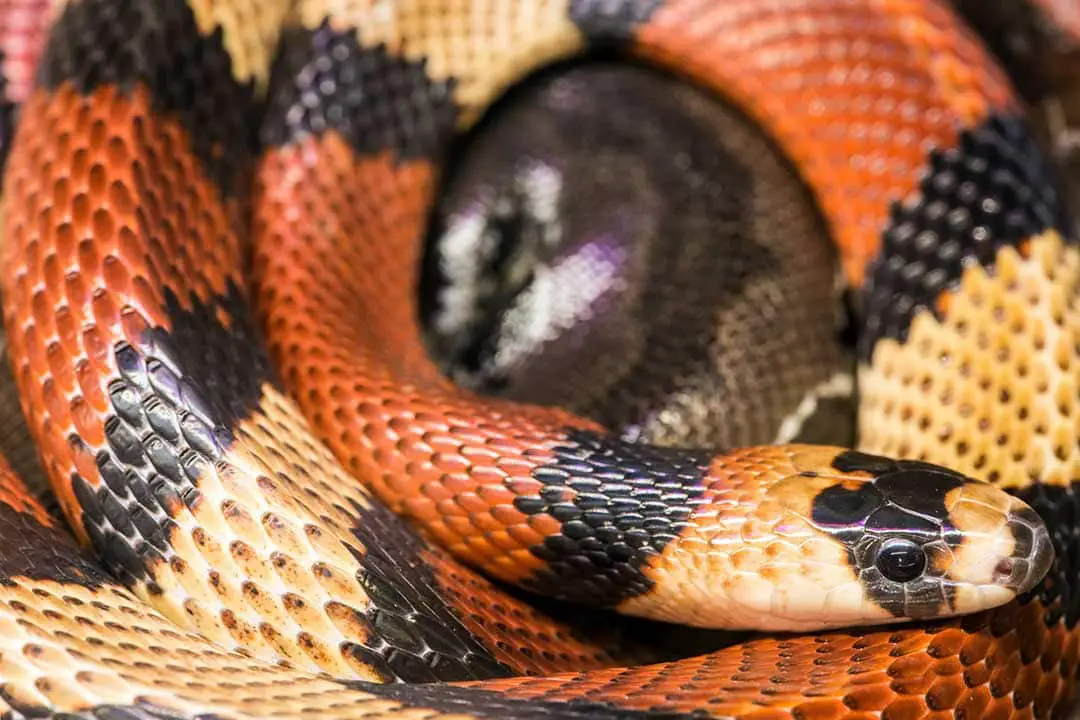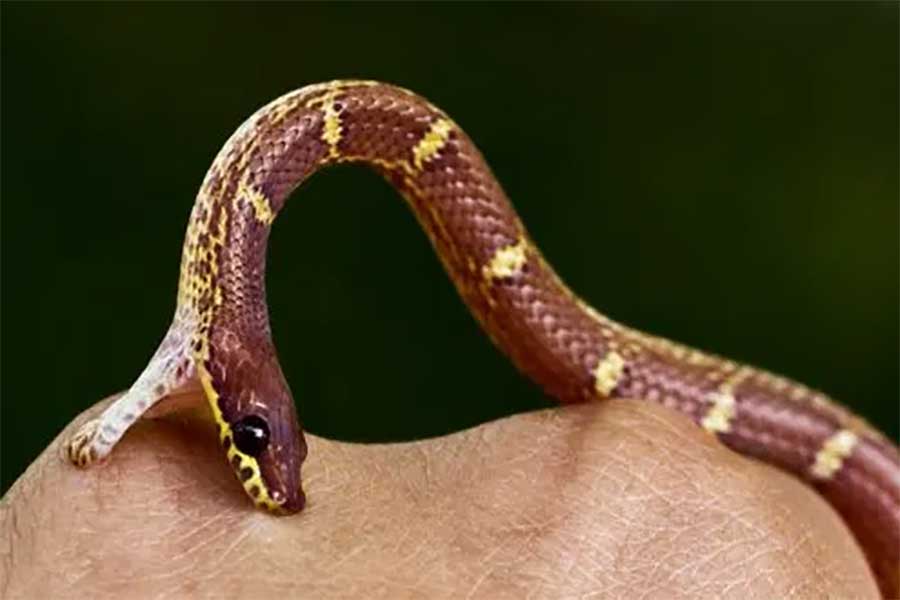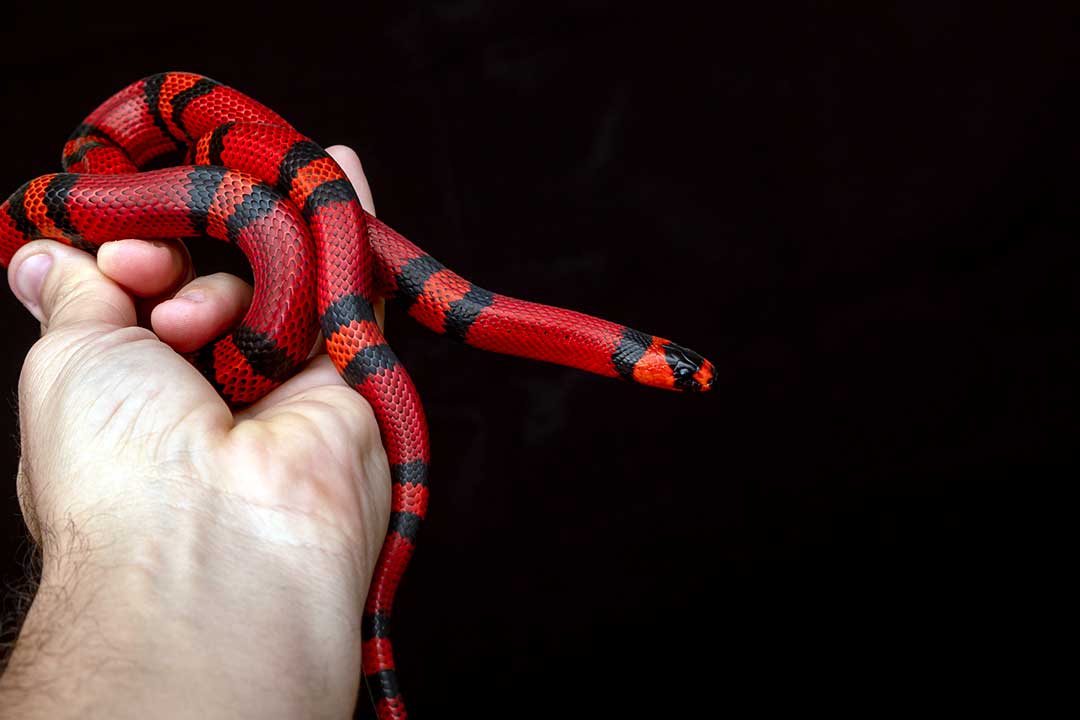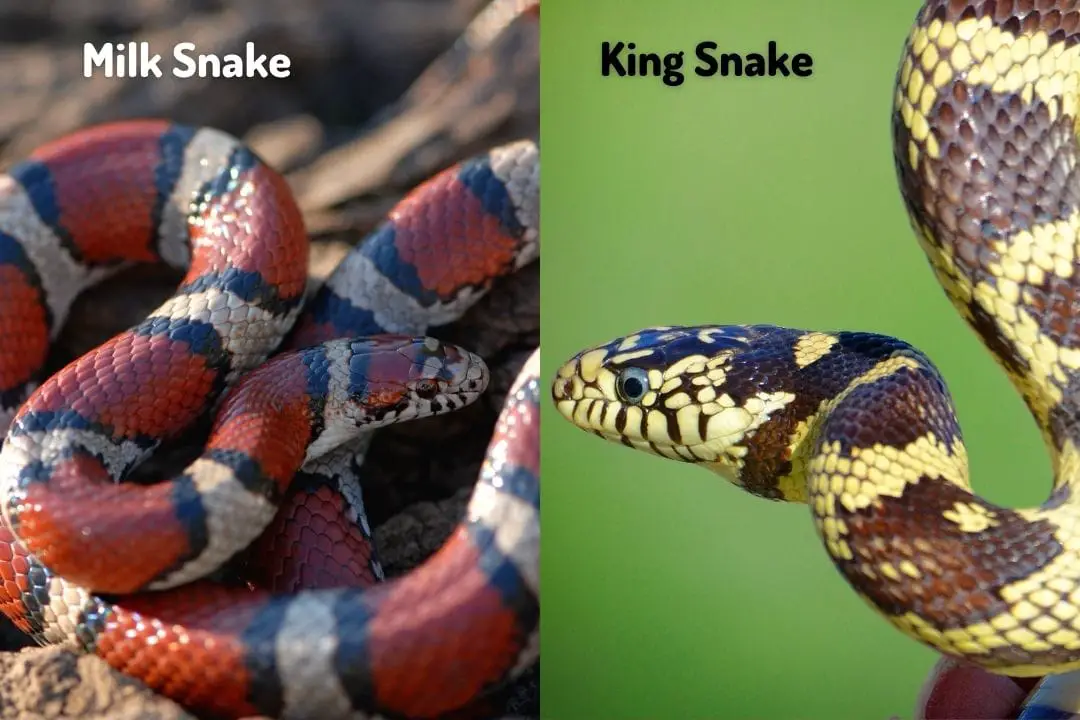Milk snakes are extremely popular among reptile owners for a very good reason, and that reason is due to how they are perceived as some of the safest snakes to own. Of course, they are also great to look at because of how they come in different colors that are eye-captivating.
Nevertheless, is there any truth to the fact that these snakes are safe?
Are milk snakes dangerous?
Milk snakes are not dangerous because they are non-venomous snakes that pose little to no threat to humans. Milk snakes are also quite docile and submissive to handling such that they will not bite or attack you as long as you handle them correctly. However, there will still be instances wherein they will bite.
From there, you can already picture out how safe milk snakes are in comparison to other snake species that can actually kill people. That’s why milk snakes are some of the most popular snakes to keep for reptile enthusiasts. In any case, let us get to know more about why milk snakes are not dangerous.
Everything you need to know about caring for Milk Snakes in captivity:
Read our Milk Snake Care Sheet (Complete Guide)
Are milk snakes aggressive?
Snakes often have a negative reputation for being aggressive animals that will attack for no reason at all. While that may be true for a lot of different snakes such as the rattlesnake, which is responsible for thousands of human deaths in a single year, not all snakes are generally aggressive.
Some snakes might seem like they are aggressive but they will only attack you out of self-defense especially when they feel threatened or if they have a reason to perceive you as a threat.
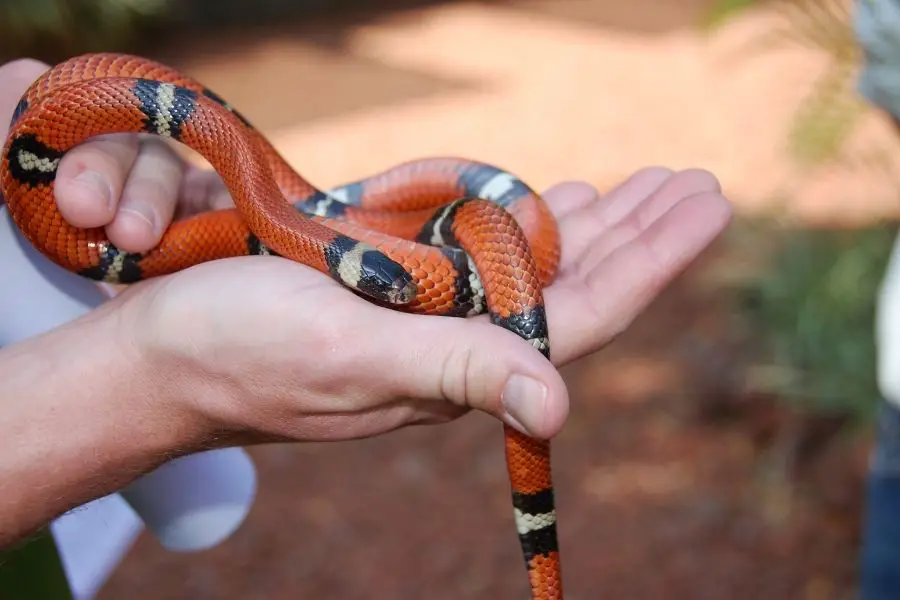
In that regard, most of the snakes that are sold as pets are generally not aggressive and will hardly attack humans for no reason at all. One such example is the milk snake, which is regarded as one of the least aggressive snake species in the world. In that sense, a milk snake is a reptile that will rarely attack humans for no reason and are generally safe to handle.
So, as long as you know how to handle a milk snake and that you are not rough with it, you will realize how docile and submissive this snake is compared to some of the other snake species in the world. This is one of the qualities that make the milk snake an ideal pet snake to keep for different reptile enthusiasts wherever you may go.
Do milk snakes bite
We did establish that milk snakes are some of the least aggressive snakes in the world. But does that mean that these snakes don’t bite? Not necessarily because milk snakes can and will bite when they have a good reason to. Now, let’s go over some of the reasons why milk snakes bite humans.
Stress
Any animal that is under a lot of stress is more likely to become aggressive. In the case of a milk snake, it might show its aggressive side when it is stressed out such as when it is a wild-caught snake that is still adjusting to life in captivity or when we are talking about a milk snake that has undergone stressful situations during transportation. Giving the snake some time to settle down will help a lot when it comes to toning down its aggression.
Hunger or malnutrition
You might have experienced it yourself that you were not in the best of moods when you were hungry or if you didn’t get sufficient nutrients from the food you ate. The same can be said when it comes to milk snakes as they can easily become more aggressive whenever they are hungry. Of course, if you are not feeding your snake the right type of food, it can also become more aggressive and prone to biting. That’s why it is crucial for you to regularly feed your milk snake with the right kind of food.
Association
Speaking of feeding your milk snake, it is best to make sure that you don’t use your hands whenever you feed it. That’s because your milk snake will associate food with your hands and may end up thinking that your hands or fingers are food as well. This is why it is never a good idea to hand-feed your milk snake.
Instead, when feeding your milk snake, go with live food. Or, if you are feeding it with frozen mice, you may want to use tongs so that your hands and the food are at a distance that is safe enough for your snake to not associate your hands with food.
Shedding
Any snake or reptile will be under a lot of stress while it is shedding. And that is why it is never a good idea to try to handle your milk snake while it is in the middle of shedding because it will become more aggressive and prone to biting.
Rough handling
When you handle your milk snake, it is best to make sure that you are as gentle as possible because milk snakes can get hurt if you handle it a bit too roughly. When a snake gets hurt, it will bite back in retaliation, which is a normal response for any animal no matter how docile it might be.
Sudden movement
Due to how milk snakes are still on the menu of some predators in the wild, it is best to make sure that you don’t make any sudden movements that can easily startle your milk snake while you are approaching it. That’s because they may associate sudden movements with a predator trying to attack them. In response, your milk snake will also fight back and bite you if it feels threatened by your sudden movement.
Does a milk snake bite hurt?
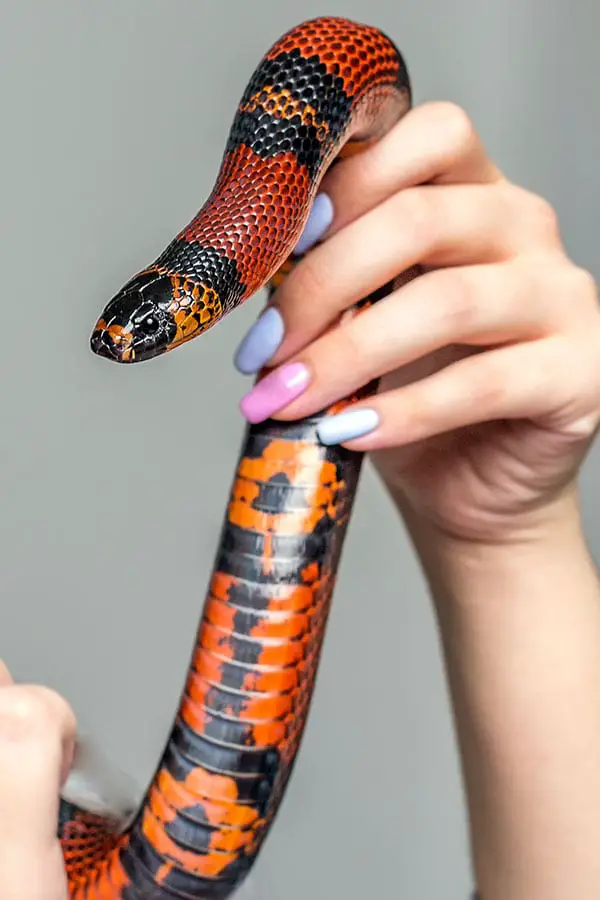
So, if you do happen to find yourself at the receiving end of a milk snake bite due to any of the abovementioned reasons we stated, the good news is that a milk snake bite is hardly ever going to hurt you.
The reason why milk snake bites are hardly going to hurt you is due to the fact that milk snakes have small teeth that aren’t big or sharp enough to break the skin. A milk snake’s teeth are there for the purpose of helping it hang on to its prey as it devours it. That means that its teeth are not designed for shredding or even injuring its prey.
As such, milk snake bites are rarely going to break the skin or even draw blood at all. But there will be cases where a milk snake’s bite can sting a bit due to how it might have bitten you in a sensitive spot. Still, you shouldn’t be too worried about whether or not a milk snake’s bite will hurt you because it hardly will.
Can a milk snake kill you?
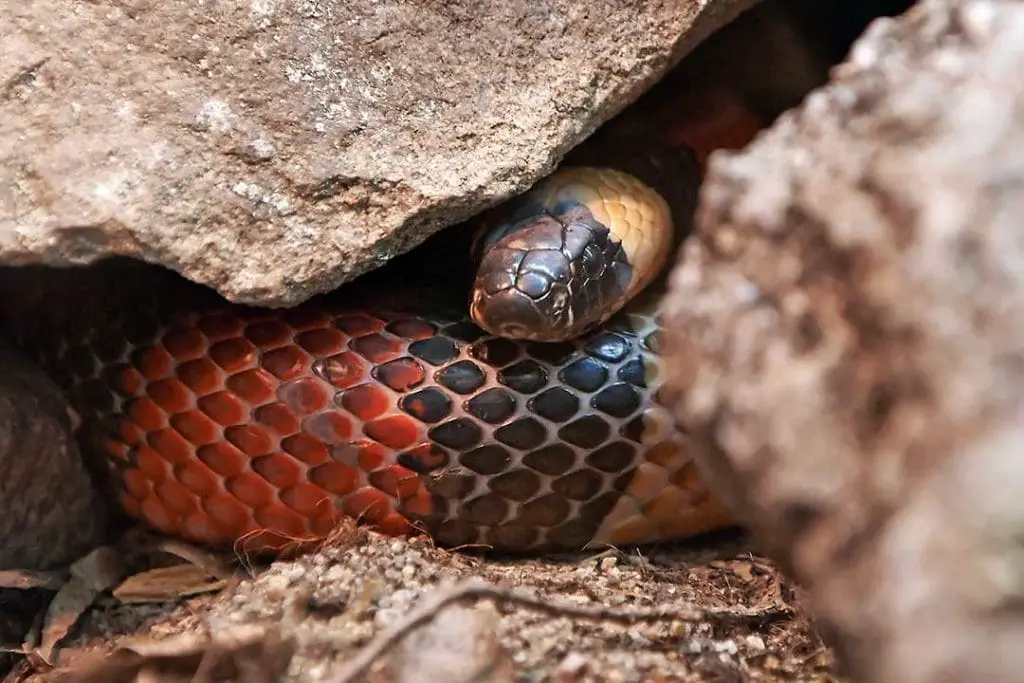
We have established how milk snake bites are hardly painful at all due to how small their teeth are. But does that mean that a milk snake also doesn’t have the capacity to kill you? Well, to some extent, it also does mean that milk snakes can’t kill you.
The main reason why a milk snake can’t kill you is due to how it doesn’t carry any venom. Milk snakes are non-venomous snakes that don’t have venom sacs or fangs to help deliver the venom to their prey. As such, the lack of venom is what makes them safe snakes that are hardly ever going to pose any threat or danger to a human.
Nevertheless, there might be the off chance that a milk snake can get you sick, which may lead to death in very rare instances. That’s because, while a milk snake’s bite isn’t strong enough to easily break the skin, there will still be instances where its bite can draw blood and cause small wounds. However small the wound may be, it can still lead to infections if left uncleaned as a milk snake’s mouth may carry tons of bacteria from its regular diet of rodents.
So, if that happened to you, the infection you got from your wound might be enough to get you sick. Death might be a possibility but such an instance should be very rare and might not even be probable at all. That’s why you wouldn’t hear of any news or see any records of milk snakes being the cause of death of a human. And as long as you immediately clean a wound from a milk snake bite, you should be fine.
Do milk snakes eat other snakes?
While milk snakes aren’t dangerous to humans, they can be dangerous to their fellow snakes. That’s because a milk snake’s diet in the wild is so varied that it can eat rodents, birds, eggs, and even smaller reptiles. Of course, that means that they will also eat smaller snakes when they have no choice.
As such, it won’t be rare for milk snakes to try to eat juvenile snakes that are smaller than they are. After all, the milk snake is still a kingsnake no matter how docile and submissive they may be to humans. And kingsnakes are known to eat other reptiles as well.
